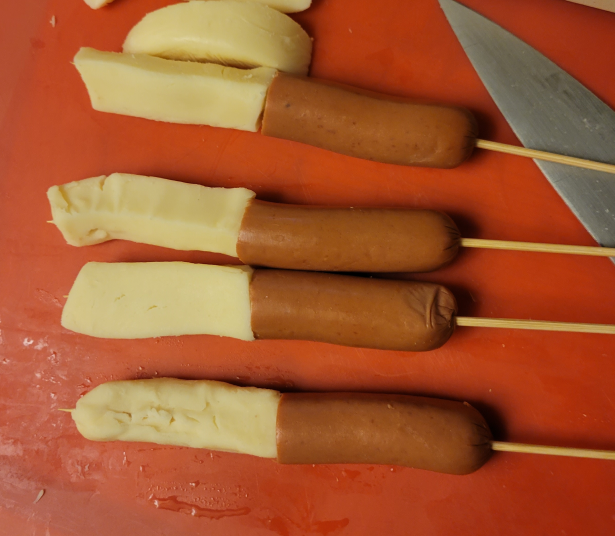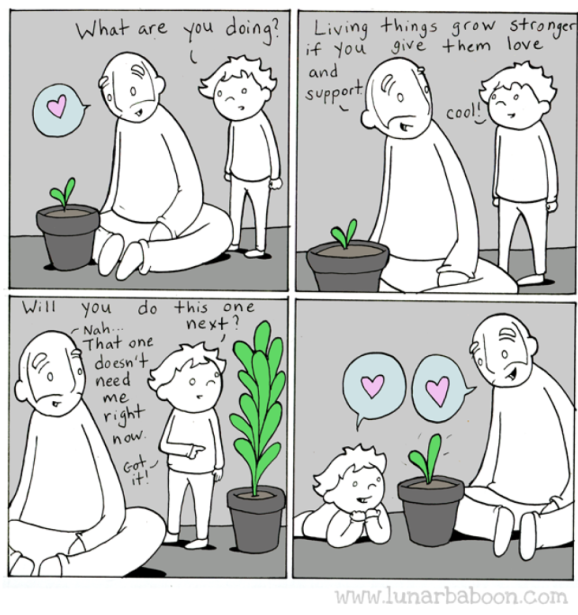Catastrophic Cookbook Review: Let’s Make Dumplings!

Why hello there, and welcome to Kitchen Catastrophe. Today, we’re talking about a cookbook that helped my mother and I out with the mess we made of Monday’s (well, Wednesday’s, when all was said and done) post. A book whose name I definitely know, and will not have to double-check before I save this file or the name will be wrong. (We double checked, and it was EXACTLY RIGHT, so how dare you doubt us, Past Me?) That’s a conflict that’s not going to go anywhere healthy, so let’s dig in!
Comic Chameleon, You Cook Gyo- You Cook Gyo-za
Good lord, Title Jon, you’re a TIGER today. By which I mean that was the biggest stretch I’ve seen from a non-big-cat.
This is ancient law: when a cat arcs its back, you say “big stretch”. Those are the rules.
Anywho, as that weird 80’s reference, and the first time we brought up the book alluded to, this book is a very interesting cookbook, in no small part because it’s also a comic book. Or at least, it presents the information of a cookbook through the structure of a comic: each step being represented by a panel with text and images. It’s a very useful format, especially for the often-somewhat-linguistically-straining issues that cooking, and particularly cooking dumplings, a form that often requires fairly precise folding, face. Like, not for nothing, but it’s amazing how much easier it is to SHOW how to cut hot dogs for Korean Corn Dogs than it is to try and figure out how to SAY it. Like, “cut the hot dog, hamburger style” is funny thanks to irony, if your kindergarten used the “hamburger vs hot dog” distinction, but, like, “cut horizontally” is dependent on how you set the hot dog down. “Cut so the ends are still intact” feels wordier than it needs to be. “Widthwise” doesn’t feel like a real word, despite spellcheck not correcting me, etc etc.
The purpose of cutting them was ALSO hard to explain, but at least I had the words for it.
So it’s an interesting idea, but does it work? Let’s talk about our standard Cookbook Review criteria: Voice, Production and Structure, Unity of Theme and Attention to Detail, and Catapult effect. Now, if you’re new, let’s break those down, and if you’re old, let’s explain how I’ve slightly changed them. Back in September, I brought up that I was considering altering my criteria, so I’m taking the plunge with this review.
Voice – As it ever was: what does the cookbook SOUND like? Is it academic, or personable? I treat this as an important characteristic because, to be blunt, there are probably MILLIONS of recipes for “pork and chive potstickers”. That is, in many ways, the DEFAULT filling for them. So it’s important that it not just be a dry print-out that I could get from anywhere. I want it concise enough to be useable, but to feel ‘real’.
Production and Structure – This Is an expanded category, and I’m already unsure of it, but ya gotta commit with these things. “Production” has traditionally meant like, the obvious value of the cookbook in a material/fiscal sense: does it use glossy paper, are there nice pictures, etc. I’m building into that the ‘structure’ of the book. Is it laid out in a reasonable way. Does it take the time to include stuff that helps cooks but costs more? (I have a great example of this IN this review, so maybe that’ll help.)
Unity of Theme/Attention to Detail – I’ve expanded this one too, because the former phrase (which was the original metric) is really part of the latter. With the first one, I was discussing how a cookbook can ‘cohere’ to itself: does the production match the voice, are the recipes chosen fitting with the voice, themes, and production…which speaks to a broader attention to the finer details.(I might later finally move to 5 criteria, and find some way to break up these first three that feels cleaner, but for now, it’s what we’re doing.
And
Catapult Effect – How much does the cookbook make me want to make stuff from it? Do I get excited reading the recipes and want to make something, do I feel like the recipes are clear enough that I can make them without stress, etc.
All that laid out, let’s start unpacking and folding! That metaphor doesn’t make sense, but I lost the cookbook for like, 40 minutes, so now I’m in a rush to get this done before I have to leave for dinner, so TOO BAD.
Vox Populi, Vox Dei
And yet I still make time to be pretentious. Curious. Anywho, the core voice of Let’s Make Dumplings is VERY nice. And I mean that in the “kind and generous” way. The book serves as an introduction to (Asian filled) Dumplings, so it take a lot of time breaking down a ton of different ways you can do stuff, why people do things different ways, and all sorts of stuff. The thing it continually reminds me of is Lunarbaboon’s comics: if you’ve not read them, they’re comics from a father who struggles with anxiety and depression, but tries to teach his children to be kind and supportive. They have a liberal/progressive bent (being open about mental health, supporting gender-nonconforming people, discussions on how the things he grew up with may have been flawed, etc), but to me, what they are most is achingly kind.
See what I mean? Just nice and supportive.
“Let’s Make Dumplings!” has that same paternalistic (in a good way) tone: educating and encouraging. It gives instructions, and suggests alternatives. It’s very much a book for those seeking to LEARN about the basics of dumplings: in the 205 pages of the book, TEN are devoted to unique/personal recipes that aren’t in the norms of their form.
Producing a Better Dumpling
The structure of the book is, in my opinion, almost flawless. Each topic builds in a fairly natural and logical way, with chapters organized reasonably: first you learn the basic equipment and ingredients needed, then you learn how to make dumpling or wonton dough, and how to fold the dough into dumplings. THEN you learn how to cook them, and finally you learn the various fillings that got into them, along with their histories, variations, recommended sauces and so on, easily the largest chapter of the book. Then, they move to baozi, steamed buns that are in many ways just large soft dumplings. Then they briefly introduce their personal creations, before moving into sweet dumplings (for desserts or snacks), dumpling sauces, some end of book tidying (a little wrap-up section, a thank you page, a ‘meet the authors’, and an index.)
And I want to touch on that last one, because I think it’s a great example of how structure can be part of production, and vice-versa. I know a LOT of cookbooks that don’t have very good tables of contents or indices (I love and hate that I nailed both of those plurals without a moment’s hesitation. Just a week or two ago I was discussing post-positive adjectives and their effects on pluralization. Because I’m an insanely large nerd.), or only have one and not the other, and let me just say that if both are good, it’s SO MUCH BETTER as a user. If I’m closer to the back, or know the specific thing I want, I can hop to the index. If I’m closer to the front or am looking for something more general, Table of Contents. There was one cookbook I was trying to find something in, and It was frustrating, because the table of contents listed the chapter start, but not the contents of each chapter. You had to go to the first page of the chapter to get that. Which I think is fine as a FOLLOW-UP, but the book also had no index. So if I didn’t know which chapter the dish fell into, I had to manually flip from Chapter intro to chapter intro, hoping to find it. Not so here. Look at this page, “a Word about Mandu”
LOOK AT IT.
This is the page just before they give you a recipe for mandu, Korean dumplings. It’s listed as its OWN entry in the table of contents, and it is listed multiple times in the index: as the “about mandu” page, AND as the only page to discuss gochujang (which as you can see in the bottom right, it gives you a rough idea of the container you’re looking for when shopping.) You can (maybe, if you zoom in) see that it references other recipes, so if you’re struggling to remember which dumpling you wanted, there’s an immediate reference for “If not this one, check these two.”.
The only real complaints I have with the structure is that the book is a semi-rigid soft-cover that’s a little wide relative to its spine, which means there’s more resistance/pressure when trying to open/read the extreme pages: the cover WANTS to close more as you’re trying to read the ingredient section or the index. And there’s a couple little sections where I think they build a little too much space, or don’t use it clearly enough. Like, when discussing the invention of potstickers, they mention they’re called guotie in Mandarin, and break down that guo means “wok/pot/pan”, and tie means “stuck/glue/next to”…but they don’t synthesize that into “which means they’re ‘potstickers’ in both English and Mandarin”. Or like, when describing how to make Rayu-Kewpie dipping sauce, they present the recipe as three steps: combine Rayu (Chili oil) and Kewpie (mayo) in a bowl, then whisk to combine. Then serve or store. And like…I feel like you didn’t need the picture for step one. Indeed, since it forces them to repeat “combine” in steps 1 and 2, I think it makes the recipe seem untidy. Just make it two steps: “In a bowl, whisk rayu and kewpie to combine”.
Spill the Uni-Tea, Sis
And I thought the bit about Gyoza was bad. Anywho, Unity of Theme and Attention to Detail. I think a great example of the unity of theme aspect comes a page and a half after that ‘word about mandu’ page. Because after you make the filling, THIS is how the cookbook instructs you to continue the recipe.
MORE PICTURES, DAMN YOU.
I don’t know how clear that text will be, so to break it down: the steps are “fold”, ”cook”, and “serve” , and each of them has clear recommendations, but also potential alterations and considerations: If you’re going to pan- or deep-fry the mandu, consider the half-moon or pleated crescent shapes (pages provided). If you’re making it for Dumpling Soup, consider THESE shapes instead. For cooking, do what you want, but here’s the two ways we like (with page numbers). Then serve: you can serve it with any kind of sauce (or none, these are so flavorful!) but we particularly recommend Rayu (chili oil) if you want them even SPICIER, and the recipe for making soup with them is on the next page.
It feels comprehensive and guiding without being confining/restrictive. I don’t feel like I’m “wrong” for steaming or boiling my mandu, I just feel like I should TRY frying them.
Arm the Catapults!
As to the Catapult effect, I’d say it’s pretty strong for the book. Like, breaking all of this down for you guys, and trying to figure out where to get a slightly hard-to-source ingredient for a recipe I had planned for this weekend is really pushing on me to say “fuck it”, and just make the Mandu, or Mandu-guk. Like, I like Kimchi and Gochujang! I like soup! IT would certainly be an easier sell to my family! Will I do it? Find out, with me, this weekend. But while that goes on its way, I stand by this being a very beginner-friendly dumpling cookbook. The ONLY thing I think might hold someone back is that their wonton dough suggests using a pasta machine to get the right thinness, and that’s a fairly pricey bit of kitchenware. So if that’s not a deal-breaker for you, I heartily recommend it.
Conclusion
It’s fun, encouraging, informative, and inspiring. It’s not PERFECT, but it’s pretty close in my opinion. I…don’t really have much to add, especially because I have to run and pick up my brother and then try and unsnarl the timeline for this weekend. I recommend it, for what that’s worth. THE BOOK, not, you know, the unsnarling of timelines.
MONDAY: MAYBE WE MAKE AN 11 HOUR TURKEY RECIPE, MAYBE I MAKE SOUP. IT’S ALL TO PLAY, AT THE MOMENT.
THURSDAY: LET ME GET BACK TO YOU WHEN I HAVE, YOU KNOW, A LARGER FRAGMENT OF SANITY.










